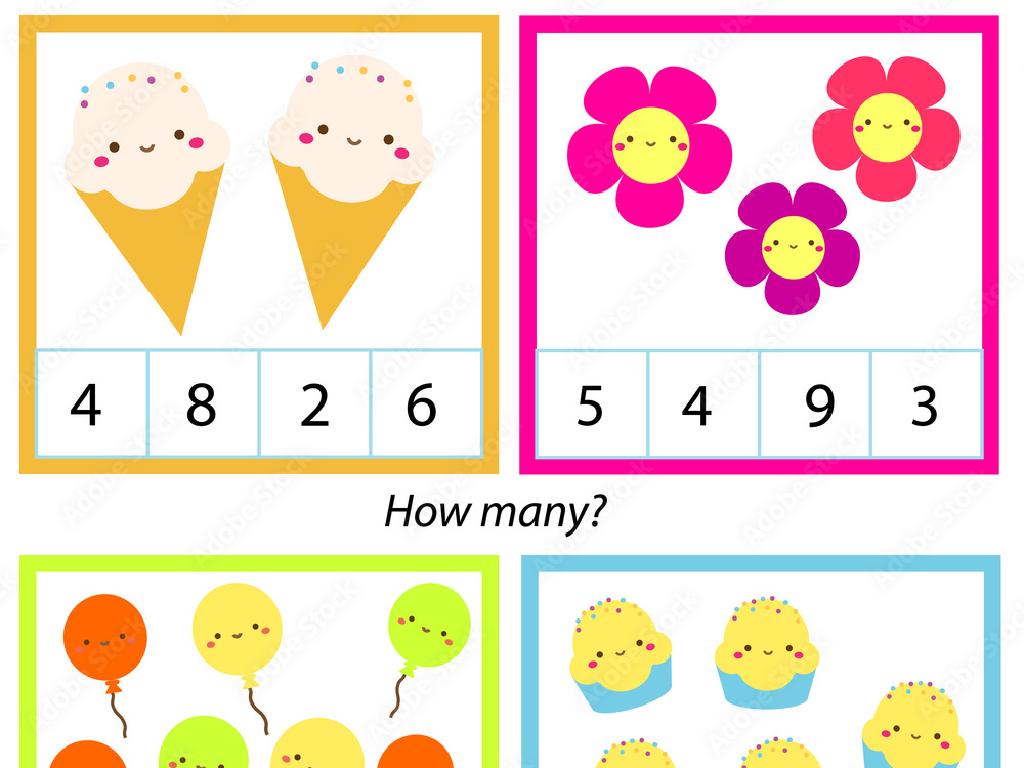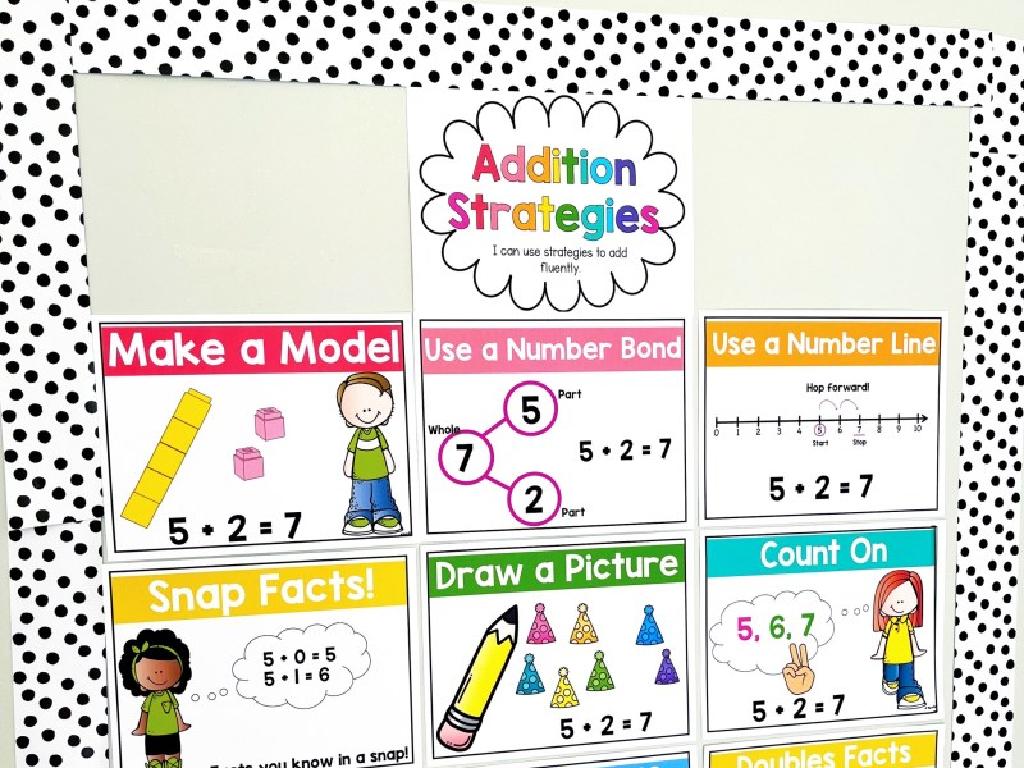Identify And Select Countries Of Africa: Region 5
Subject: Social studies
Grade: Seventh grade
Topic: Africa: Geography
Please LOG IN to download the presentation. Access is available to registered users only.
View More Content
Exploring Africa: Region 5 Geography
– Africa’s diverse landscape
– Africa is not a country, but a continent with 54 unique countries.
– The concept of regions
– Regions help us study Africa’s vast and varied geography more easily.
– Focus on Region 5
– Region 5 includes countries like South Africa, Lesotho, and Swaziland.
– Identifying Region 5 countries
|
This slide introduces students to the geography of Africa, emphasizing its diversity and the importance of understanding its regional divisions. Region 5, often referred to as Southern Africa, includes a variety of countries with distinct cultures, languages, and landscapes. The lesson will focus on identifying these countries and understanding their place within the continent’s geography. Encourage students to recognize Africa’s complexity beyond stereotypes and to appreciate the continent’s rich cultural and geographical variety. Provide a map for better visualization and ask students to locate Region 5 and its countries.
Exploring Africa: Region 5
– Understand Africa’s geography
– Africa is not a country, but a continent with diverse landscapes.
– Explore climate and resources
– Region 5 has varied climates, from deserts to rainforests, and is rich in resources like minerals and crops.
– Discover cultural diversity
– Home to many ethnic groups, each with unique traditions and customs.
– Learn about linguistic variety
– Over 2,000 languages are spoken across Africa, showcasing its linguistic diversity.
|
This slide aims to introduce students to the vast and varied geography of Africa, specifically focusing on Region 5. Highlight the common misconception that Africa is a homogeneous place, and emphasize its true geographical diversity, including deserts, savannas, and rainforests. Discuss the climate of Region 5 and its impact on the natural resources available, such as minerals and agricultural products. Explore the cultural richness, touching on different ethnic groups, their traditions, and how these contribute to Africa’s identity. Lastly, address the linguistic variety, with thousands of languages spoken, and how this reflects the continent’s complex history and cultural wealth. Encourage students to research and present on a specific country within Region 5, focusing on these aspects.
Exploring Africa: Region 5 Overview
– Africa’s regional divisions
– Africa is divided into five regions for easier study and management.
– Significance of regions
– Understanding regions helps grasp Africa’s cultural and geographical diversity.
– Region 5 quick facts
– Region 5 includes countries like South Africa, Lesotho, and Swaziland.
– Engage with Region 5
– Explore maps, flags, and capitals of Region 5 countries.
|
This slide introduces students to the concept of dividing Africa into regions, which simplifies the study of this vast continent. Emphasize the importance of regions in understanding the diverse cultures, economies, and environments found across Africa. Provide quick facts about Region 5, such as its location in the southern part of Africa, key countries, and notable geographical features. Encourage students to engage with the material by researching maps, flags, and capitals of the countries in Region 5, fostering a deeper connection with the content.
Exploring Africa: Focus on Region 5
– Countries within Region 5
– Examples: South Africa, Zimbabwe, Botswana
– Region 5’s physical geography
– Features include deserts, rivers, and plateaus
– Boundaries defining Region 5
– Borders include natural and political lines
– Region 5’s significance
– Key economic and cultural area in Africa
|
This slide aims to introduce students to Region 5 of Africa, helping them identify the countries that are part of this region, understand its physical geography, and recognize its boundaries. It’s important to highlight the significance of Region 5 in terms of its economic and cultural contributions to the continent. Encourage students to explore maps and resources to get a clear picture of the region’s location and features. Discuss the diversity within Region 5, including its various landscapes, climates, and resources, and how these factors contribute to the livelihoods of the people living there.
Exploring Africa: Region 5 Countries
– List Region 5 countries
– Examples: Nigeria, Cameroon, Gabon
– Capitals and key facts
– Abuja is the capital of Nigeria, known for its Zuma Rock
– Diversity in Region 5
– Varied cultures, languages, and ecosystems
– Geographical significance
|
This slide aims to introduce students to the countries of Region 5 in Africa, which includes nations like Nigeria, Cameroon, and Gabon. Highlight the capital cities, such as Abuja for Nigeria, and share interesting facts like the famous Zuma Rock. Discuss the rich diversity found within this region, from the multitude of languages spoken to the various cultural practices and natural ecosystems. Emphasize the importance of understanding the geographical significance of this region, including its natural resources and strategic location. Encourage students to research more about each country to appreciate the complexity and beauty of Africa’s geography.
Region 5: Economy and Society
– Explore Region 5’s economy
– Agriculture, trade, and natural resources
– Examine education, lifestyle, traditions
– Schooling systems, daily life, cultural practices
– Discuss Region 5’s societal challenges
– Issues like poverty, health, and conflict
– Reflect on impacts to local communities
– How economy and society affect daily life
|
This slide aims to provide an overview of the economic and social landscape of Africa’s Region 5. Students should understand the key economic activities, including agriculture, trade, and the exploitation of natural resources, which are the backbone of these countries. Social aspects cover the education systems, which vary widely, the lifestyle of the people, and the rich traditions that define each culture. Discuss the challenges such as poverty, health crises, and political instability that impact these countries. Encourage students to think critically about how these factors influence the lives of individuals in these communities and to consider similarities and differences with their own lives.
Class Activity: Exploring Africa’s Region 5
– Engage with an interactive map
– Label Region 5 countries
– Find and name each country in Region 5 on the map
– Discover interesting country facts
– Research and note down unique aspects of each country
– Share findings with the class
|
This activity is designed to help students learn about the countries in Africa’s Region 5 through an interactive map. Provide students with access to an online interactive map or a physical map and stickers for labeling. Each student or group should identify and label the countries in Region 5. Encourage them to find and note down interesting facts about each country, such as the capital city, population, official language, or a unique cultural element. After the activity, students will share their findings with the class, enhancing their knowledge and presentation skills. Possible variations of the activity could include creating a fact file for each country, designing a travel brochure, or preparing a short news report on a significant event from one of the countries.
Reflection on Africa’s Region 5
– Recap of Region 5’s geography
– Review key countries, landscapes, and climate in Region 5
– Significance of regional studies
– Understanding diversity and global interconnectedness
– Encourage questions
– Open discussion, no wrong questions
– Share personal reflections
– Relate learnings to personal experiences or future travels
|
This slide aims to consolidate the students’ knowledge about Africa’s Region 5 and to understand the broader importance of learning about different regions. Start by summarizing the key geographical features of Region 5, including major countries and physical characteristics. Discuss why it’s important to learn about different regions, emphasizing cultural diversity and the impact of geography on daily life. Encourage students to ask any lingering questions they might have and to share their thoughts or personal connections to the material. This reflection will help students synthesize the information and see the relevance of geography in a global context.
Homework: Explore Region 5 of Africa
– Research a Region 5 country
– Prepare a cultural & geographical overview
– Include traditions, languages, and landscapes
– Find an interesting fact about the country
– Could be about history, achievements, or natural wonders
– Create a short presentation
|
Students are tasked with selecting a country from Africa’s Region 5 to research and prepare a short presentation. They should focus on understanding and presenting the country’s culture, which may include local traditions, languages, and ethnic groups, as well as the geography, such as major cities, landscapes, and climate. Additionally, students should find an interesting fact about their chosen country, which could be a historical event, a notable achievement, or a unique natural feature. This assignment will help students develop research skills and gain a deeper appreciation for the diversity within Africa’s Region 5. Encourage creativity in their presentations and remind them to cite their sources.






